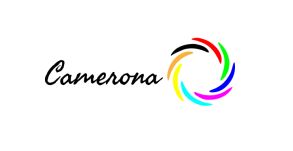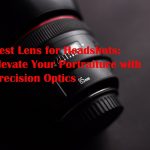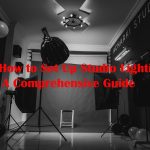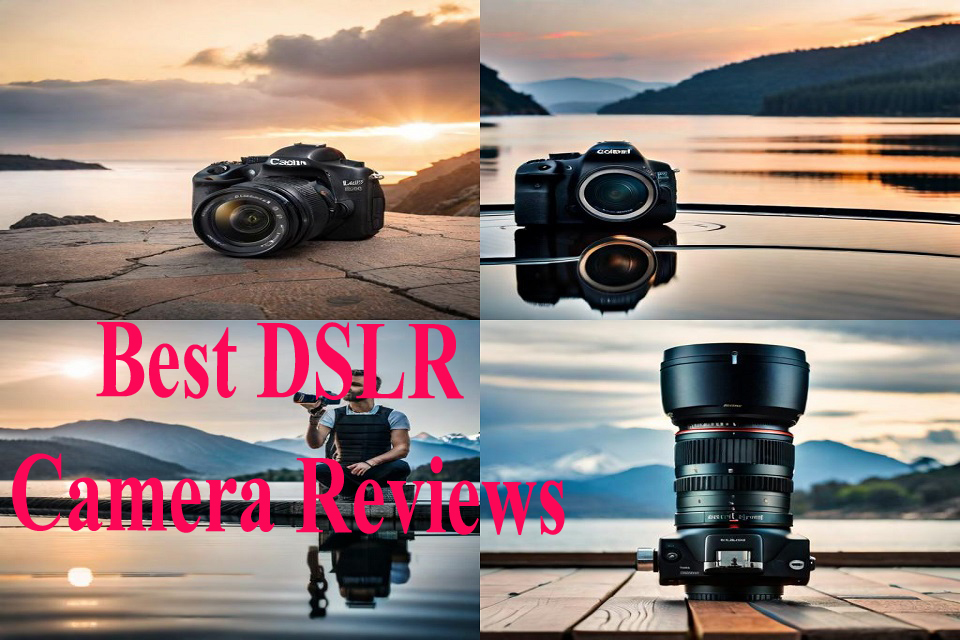
Best DSLR Camera Reviews
Table of Contents
Introduction
In today’s fast-paced digital world, photography has become an integral part of our lives. Whether you are a professional photographer or an enthusiast looking to capture precious moments, having the right camera is essential. DSLR cameras have long been the preferred choice for photographers due to their versatility and exceptional image quality. In this article, we will explore the world’s best DSLR cameras and help you make an informed decision when purchasing one.
What is a DSLR Camera?
A DSLR (Digital Single-Lens Reflex) camera is a type of digital camera that uses a mirror mechanism to direct light from the lens to the optical viewfinder. It offers interchangeable lenses, manual controls, and superior image quality compared to compact cameras or smartphones. DSLR cameras are favored by professionals and photography enthusiasts for their ability to capture stunning photographs in various settings.
Benefits of DSLR Cameras
DSL cameras offer several advantages over other types of cameras:
- Image Quality: DSLR cameras boast larger image sensors, allowing for better image quality, sharpness, and dynamic range.
- Interchangeable Lenses: One of the biggest advantages of DSLR cameras is the ability to switch between lenses, providing flexibility and the opportunity to capture a wide range of subjects.
- Manual Controls: DSLRs offer precise manual controls over settings such as aperture, shutter speed, and ISO, giving photographers full creative control.
- Low Light Performance: DSLR cameras excel in low-light situations, producing less noise and capturing more details compared to other cameras.
- Speed and Performance: DSLRs have faster autofocus systems, continuous shooting capabilities, and minimal shutter lag, making them ideal for capturing action shots.
Factors to Consider When Choosing a DSLR Camera
Before investing in a DSLR camera, consider the following factors:
1. Budget
Determine your budget range to narrow down your options and find a camera that offers the best value for your money.
2. Megapixels
While megapixels aren’t the sole determinant of image quality, they do play a role in the level of detail a camera can capture.
3. Sensor Size
A larger sensor typically results in better low-light performance and improved dynamic range.
4. Lens Compatibility
Check the availability and compatibility of lenses for the camera system you’re interested in to ensure you have a wide range of options.
5. Features and Controls
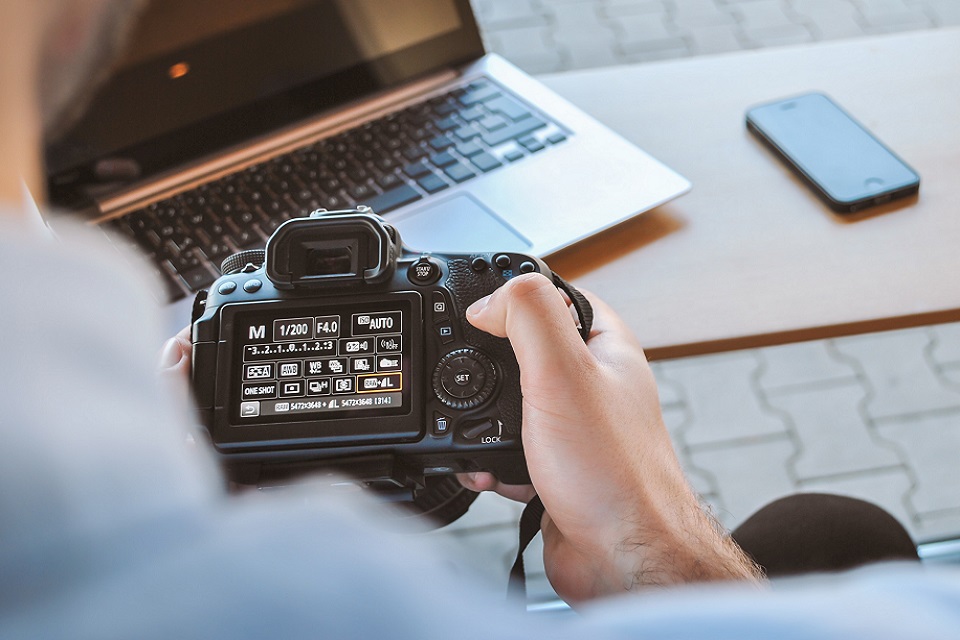
Consider the specific features and controls that are important to you, such as video recording capabilities, touchscreen functionality, and Wi-Fi connectivity.
Top DSLR Cameras in the Market
Canon EOS 5D Mark IV
The Canon EOS 5D Mark IV is a highly capable DSLR camera that offers a wide range of features and superior image quality. With its impressive specifications, it caters to the needs of professional photographers and enthusiasts alike.
Product Specifications:
| Specification | Description |
|---|---|
| Sensor | 30.4 megapixel full-frame CMOS |
| ISO Range | 100-32000 (expandable to 50-102400) |
| Autofocus Points | 61-point high-density reticular AF |
| Continuous Shooting | Up to 7 frames per second |
| Video Recording | 4K DCI (4096 x 2160) at 30p, Full HD (1920 x 1080) at 60p |
Why & which type of people buy it? The Canon EOS 5D Mark IV appeals to both professionals and advanced photography enthusiasts who seek exceptional image quality, versatile shooting capabilities, and reliable performance. Its robust feature set and high-resolution sensor make it a preferred choice for photographers engaged in various genres, including landscape, portrait, wedding, and wildlife photography.
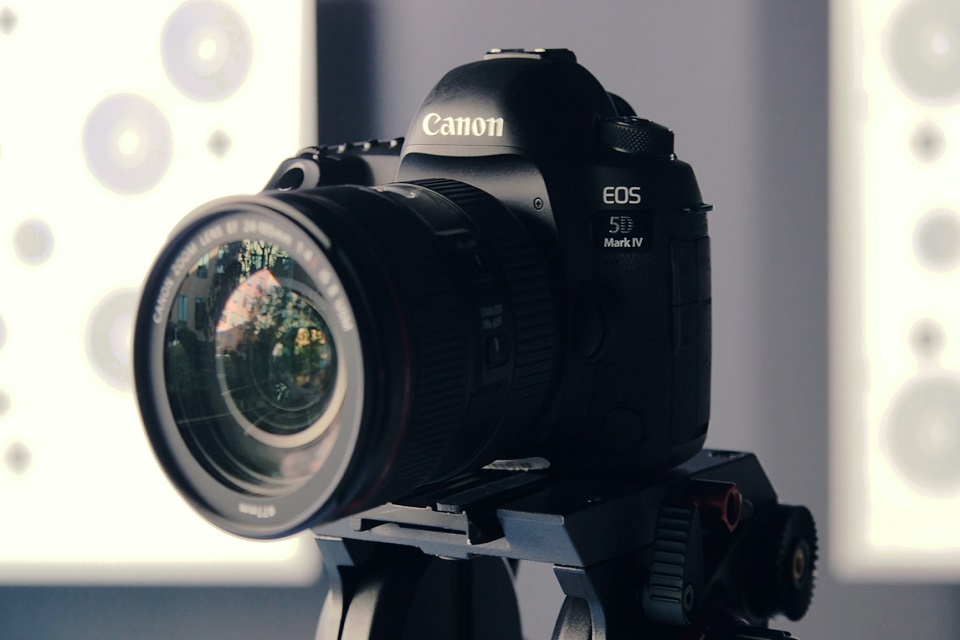
Pros:
- Superior image quality.
- Wide ISO range for low-light performance.
- Advanced autofocus system.
Cons:
- High price point.
- Relatively large and heavy.
Final Verdict: The Canon EOS 5D Mark IV is a top-tier DSLR camera that delivers exceptional image quality and offers a versatile set of features. While it comes with a premium price tag, its impressive specifications and performance make it a worthwhile investment for serious photographers seeking professional-grade results in diverse shooting scenarios.
Nikon D850
The Nikon D850 stands as a formidable DSLR camera, boasting an array of advanced features, unrivaled image quality, and exceptional performance. It emerges as the preferred choice for professional photographers and photography enthusiasts aiming to achieve outstanding results in their craft.
Product Specifications:
| Specification | Description |
|---|---|
| Sensor | 45.7-megapixel full-frame CMOS |
| ISO Range | Expandable from 64 to 25600 (up to 32-102400) |
| Autofocus Points | 153-point autofocus system with 99 cross-type sensors |
| Continuous Shooting | Up to 7 frames per second (9 fps with battery grip) |
| Video Recording | 4K UHD (3840 x 2160) at 30p, Full HD (1920 x 1080) at 120p |
Why & which type of people buy it? The Nikon D850 finds its appeal among professional photographers seeking unparalleled image quality, exceptional dynamic range, and precise control over their craft. Its high-resolution sensor, advanced autofocus system, and reliable performance make it an ideal companion for various genres, including landscape, portrait, fashion, and wildlife photography. Moreover, photography enthusiasts in search of a versatile and feature-rich camera will also be drawn to the D850’s capabilities.
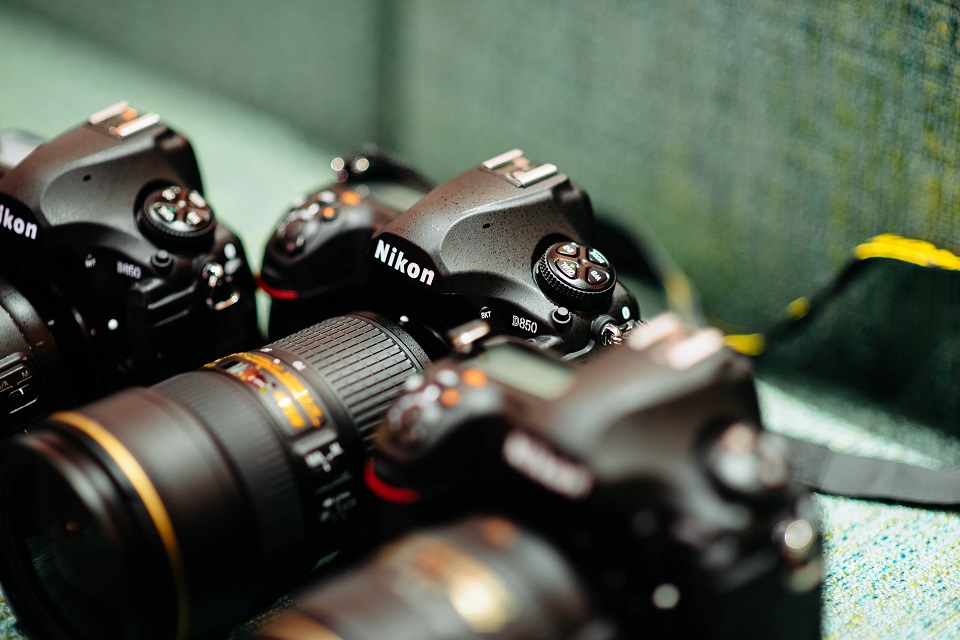
Pros:
- Unmatched image quality and resolution.
- Wide ISO range for exceptional low-light performance.
- Extensive autofocus system with numerous focus points.
Cons:
- Considerable weight and bulk.
- Falls on the higher end in terms of pricing.
Final Verdict: The Nikon D850 unquestionably excels as a DSLR camera, delivering exceptional image quality, performance, and versatility. Despite its relatively hefty build and premium price tag, the camera’s impressive specifications and advanced features make it an investment worth considering for professional photographers and enthusiasts who aspire to produce remarkable results and exercise the utmost control over their photography journey.
Sony Alpha A7 III
The Sony Alpha A7 III is a remarkable mirrorless camera that combines high-quality imaging, advanced features, and exceptional performance. With its impressive capabilities and versatility, it appeals to both enthusiasts and professionals who seek superior image quality and creative freedom.
Product Specifications:
| Specification | Description |
|---|---|
| Sensor | 24.2-megapixel full-frame Exmor R CMOS |
| ISO Range | 100-51200 (expandable to 50-204800) |
| Autofocus Points | 693-point focal-plane phase-detection AF |
| Continuous Shooting | Up to 10 frames per second |
| Video Recording | 4K UHD (3840 x 2160) at 30p, Full HD (1920 x 1080) at 120p |
Why & which type of people buy it? The Sony Alpha A7 III is sought after by photography enthusiasts and professionals alike, thanks to its impressive features and capabilities. It caters to those who value excellent image quality, low-light performance, and versatility in their photography. With its advanced autofocus system, high-resolution sensor, and fast continuous shooting, it is suitable for a wide range of genres, including portraits, landscapes, events, and street photography.
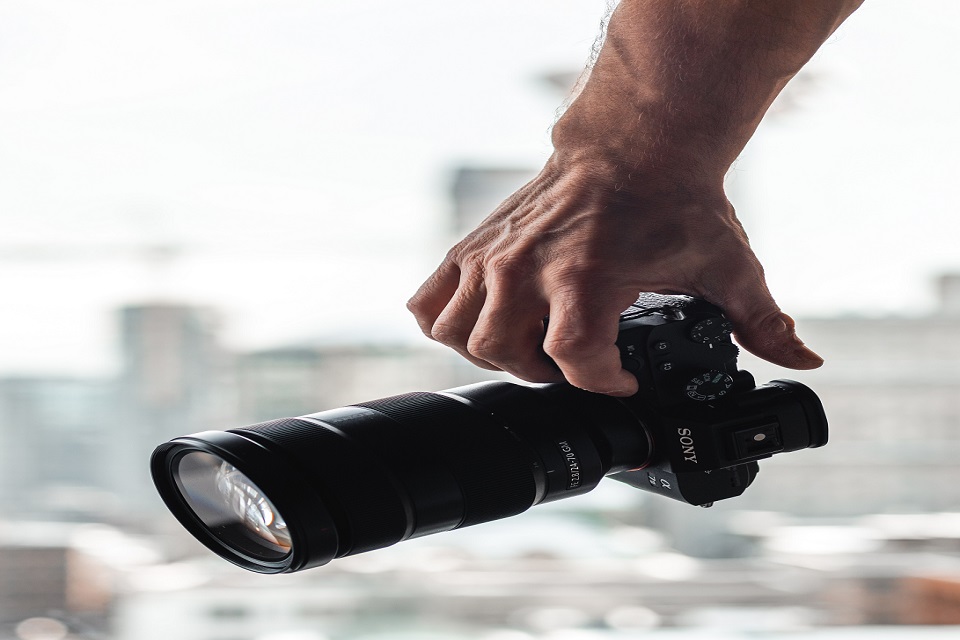
Pros:
- Superb image quality and low-light performance.
- Extensive autofocus system for precise subject tracking.
- Impressive video capabilities.
Cons:
- Limited touchscreen functionality.
- The menu system can be overwhelming for newcomers.
Final Verdict: The Sony Alpha A7 III stands out as an exceptional mirrorless camera, offering outstanding image quality and performance. It caters to the needs of both photography enthusiasts and professionals who crave versatility and reliability in their gear. With its impressive range of features and customizable options, it empowers users to unleash their creativity and capture stunning visuals. While it may have some minor limitations, such as limited touchscreen functionality and a complex menu system, the A7 III’s remarkable image quality and overall capabilities make it a top contender in its class. Whether you’re an enthusiast exploring new horizons or a professional seeking a reliable tool, the Sony Alpha A7 III is an investment that will undoubtedly elevate your photography experience.
Fujifilm X-T4
The Fujifilm X-T4 is a flagship mirrorless camera that combines exceptional image quality, advanced features, and impressive performance. Designed with photographers in mind, it offers a versatile shooting experience and empowers users to unleash their creative vision.
Product Specifications:
| Specification | Description |
|---|---|
| Sensor | 26.1-megapixel APS-C X-Trans CMOS 4 |
| ISO Range | 160-12800 (expandable to 80-51200) |
| Autofocus Points | 425-point phase-detection AF system |
| Continuous Shooting | Up to 15 frames per second |
| Video Recording | 4K UHD (3840 x 2160) at 60p, Full HD (1920 x 1080) at 240p |
Why & which type of people buy it? The Fujifilm X-T4 appeals to a wide range of photography enthusiasts and professionals seeking superior image quality and versatility. It caters to those who value both still photography and videography, making it suitable for genres such as landscape, portrait, street, and even professional filmmaking. Its advanced autofocus system, impressive burst shooting speed, and exceptional video capabilities make it a preferred choice for creative individuals who demand top-notch performance.
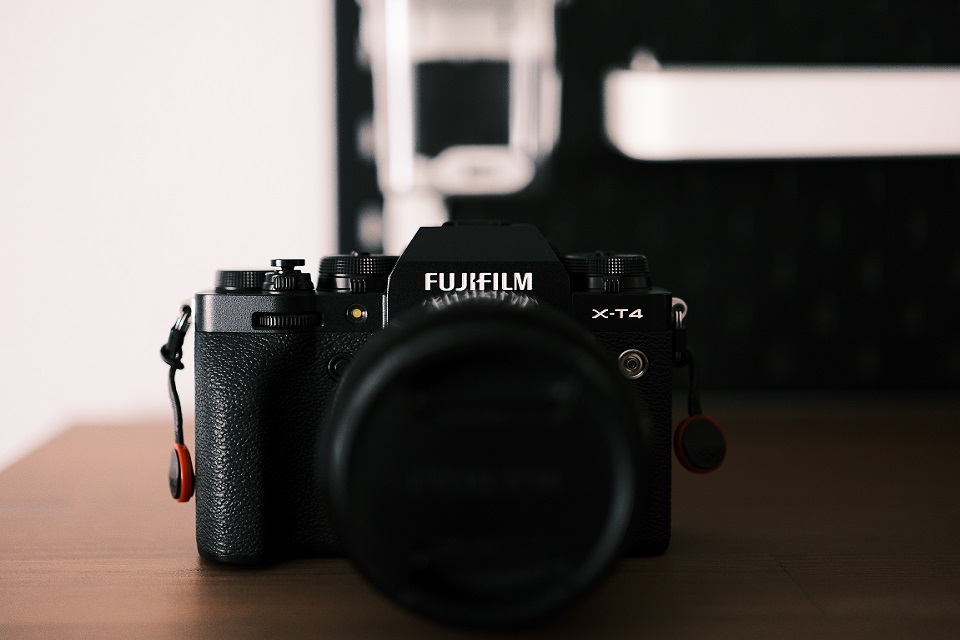
Pros:
- Excellent image quality and dynamic range.
- Advanced autofocus system for precise subject tracking.
- Impressive video capabilities, including 4K at 60p.
Cons:
- Relatively shorter battery life compared to some competitors.
- Limited touchscreen functionality.
Final Verdict: The Fujifilm X-T4 is a powerhouse mirrorless camera that excels in both still photography and videography. Its impressive image quality, advanced autofocus system, and remarkable video capabilities make it a versatile tool for photographers and filmmakers alike. While it may have a shorter battery life compared to some competitors and limited touchscreen functionality, the X-T4’s overall performance and creative possibilities make it a worthwhile investment for those looking to push their boundaries and capture stunning visuals.
Olympus OM-D E-M1 Mark III
The Olympus OM-D E-M1 Mark III is a flagship mirrorless camera that offers exceptional performance, advanced features, and unparalleled versatility. Designed for professional photographers and enthusiasts alike, it delivers stunning image quality and empowers users to capture their creative vision with ease.
Product Specifications:
| Specification | Description |
|---|---|
| Sensor | 20.4-megapixel Live MOS sensor |
| ISO Range | 200-25600 (expandable to 64-25600) |
| Autofocus Points | 121-point all-cross-type phase detection AF |
| Continuous Shooting | Up to 18 frames per second |
| Video Recording | 4K UHD (3840 x 2160) at 30p, Full HD (1920 x 1080) at 120p |
Why & which type of people buy it? The Olympus OM-D E-M1 Mark III is a perfect companion for both professional photographers and enthusiasts who value portability without compromising on performance. It appeals to those who require a versatile camera for various genres, including wildlife, sports, travel, and documentary photography. With its advanced autofocus system, impressive burst shooting speed, and excellent image stabilization, it empowers users to capture decisive moments with precision and clarity.
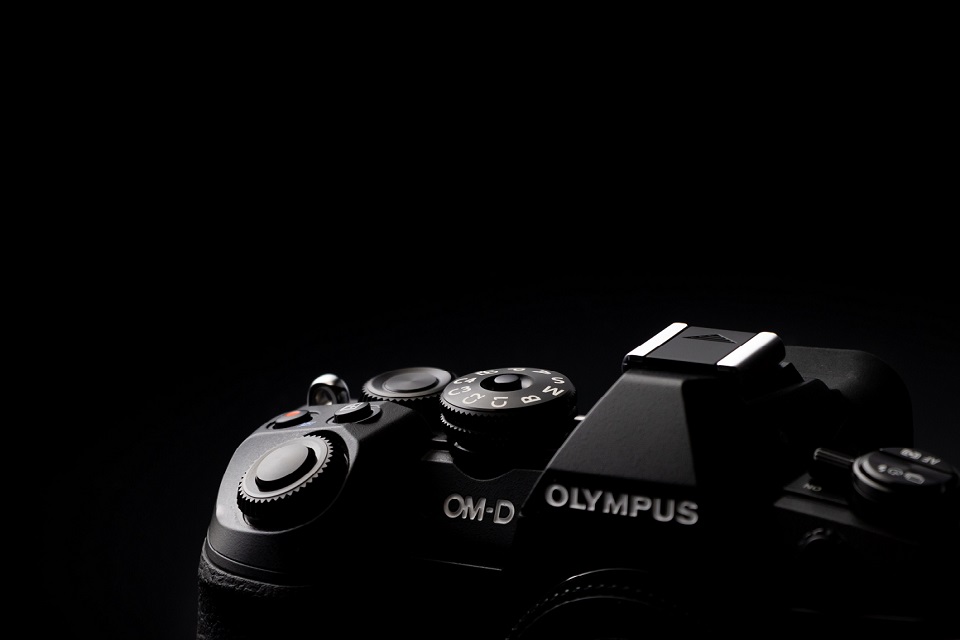
Pros:
- Outstanding image quality and dynamic range.
- Advanced autofocus system for fast and accurate subject tracking.
- Impressive continuous shooting speed of up to 18 fps.
Cons:
- Limited native lens selection compared to some competitors.
- Smaller sensor sizes may result in slightly reduced low-light performance.
Final Verdict: The Olympus OM-D E-M1 Mark III stands as a formidable mirrorless camera, offering remarkable performance and versatility in a compact package. Its exceptional image quality, advanced autofocus system, and impressive burst shooting capabilities make it an excellent choice for both professionals and enthusiasts. While the limited native lens selection and smaller sensor size may pose some limitations, the E-M1 Mark III’s overall performance and portability make it a reliable tool for capturing outstanding photographs in various situations. If you prioritize mobility and desire a camera that excels in both image quality and performance, the Olympus OM-D E-M1 Mark III is a worthy investment.
Pentax K-1 Mark II
The Pentax K-1 Mark II is a remarkable full-frame DSLR camera that combines exceptional image quality, robust features, and rugged durability. Designed for discerning photographers, it offers a wealth of creative possibilities and ensures reliable performance in various shooting conditions.
Product Specifications:
| Specification | Description |
|---|---|
| Sensor | 36.4-megapixel full-frame CMOS |
| ISO Range | 100-819200 (expandable to 50-204800) |
| Autofocus Points | 33-point SAFOX 12 AF system |
| Continuous Shooting | Up to 4.4 frames per second |
| Video Recording | Full HD (1920 x 1080) at 30p |
Why & which type of people buy it? The Pentax K-1 Mark II appeals to photographers who prioritize exceptional image quality and desire full-frame performance. It caters to those who embrace outdoor adventures and challenging shooting conditions, thanks to its weather-sealed construction and robust build. With its versatile features and extensive ISO range, it is suitable for a wide range of genres, including landscape, portrait, and astrophotography.
Pros:
- Excellent image quality and high-resolution sensor.
- Impressive ISO range for exceptional low-light performance.
- Weather-sealed and rugged construction for outdoor durability.
Cons:
- Limited video recording capabilities compared to some competitors.
- Relatively slower continuous shooting speed.
Final Verdict: The Pentax K-1 Mark II is a reliable full-frame DSLR camera that delivers outstanding image quality and durability. It caters to photographers who value ruggedness and versatility in their gear, making it an ideal choice for outdoor enthusiasts and professionals alike. While its video recording capabilities may be limited compared to some competitors and the continuous shooting speed may be slower, the K-1 Mark II’s exceptional image quality, extensive ISO range, and rugged construction make it a compelling option for those seeking a reliable tool to capture stunning photographs in challenging environments.
Comparison of DSLR Cameras
Here is a brief comparison of the key features of the top DSLR cameras mentioned above:
| Camera Model | Megapixels | Sensor Size | Video Recording | Autofocus System | Price |
| Canon EOS 5D Mark IV | 30.4 MP | Full-frame | 4K | 61-point AF | $$$ |
| Nikon D850 | 45.7 MP | Full-frame | 4K | 153-point AF | $$$ |
| Sony Alpha A7 III | 24.2 MP | Full-frame | 4K | 693-point AF | $$ |
| Fujifilm X-T4 | 26.1 MP | APS-C | 4K | 425-point AF | $$ |
| Olympus OM-D E-M1 Mark III | 20.4 MP | Micro Four Thirds | 4K | 121-point AF | $ |
| Pentax K-1 Mark II | 36.4 MP | Full-frame | Full HD | 33-point AF | $$ |
Conclusion
Choosing the best DSLR camera depends on your specific needs, budget, and preferences. The Canon EOS 5D Mark IV, Nikon D850, Sony Alpha A7 III, Fujifilm X-T4, Olympus OM-D E-M1 Mark III, and Pentax K-1 Mark II are all excellent options, each with its own strengths. Consider your photography style, desired features, and budget before making a decision. With any of these top DSLR cameras, you can capture stunning images and unleash your creativity.
FAQs
- Are DSLR cameras better than smartphones for photography?
- While smartphones have improved in terms of camera technology, DSLR cameras still offer superior image quality, manual controls, and interchangeable lenses, making them the preferred choice for professional photographers.
- What is the advantage of a full-frame sensor in a DSLR camera?
- Full-frame sensors capture more light, resulting in better low-light performance, improved dynamic range, and shallower depth of field, allowing for more creative control over the focus and background blur.
- Can I use DSLR lenses on mirrorless cameras?
- Some mirrorless cameras support DSLR
